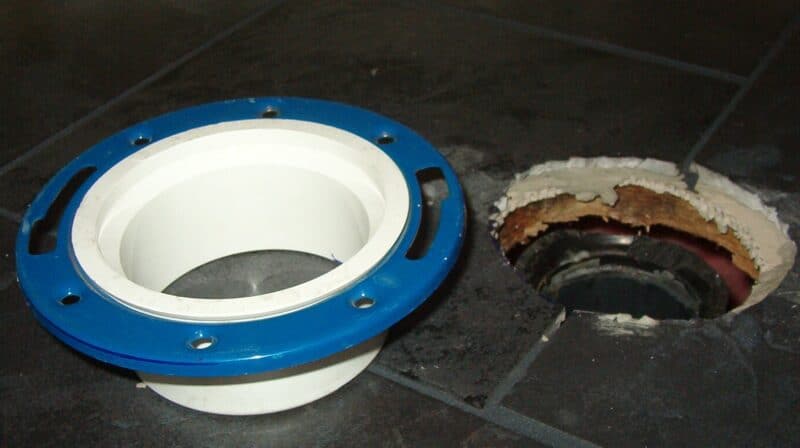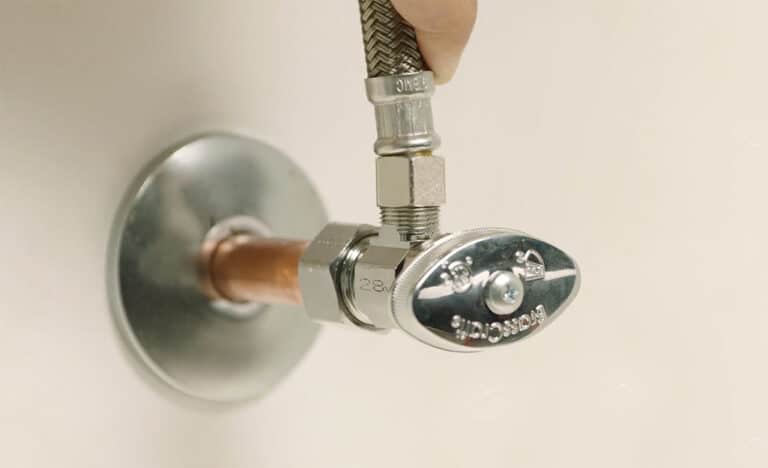How Many Types of Toilet Flanges are There?

Most homeowners are eventually faced with the problem of having a loosened toilet that might even be wiggling or leaking around the base. When this occurs, it’s time to think about making some repairs to your toilet. If your toilet is leaking around the base, fixing the toilet will probably take on a bit more urgency than other kinds of repairs.
In the scenario just described, it’s more than likely that your toilet has some kind of flange problem, and while this is fairly common, it will force you to consider the types and sizes of toilet flanges before making any repairs. The two standard sizes of toilet flanges are the 4 x 3 in. type and a 3 x 4 in. type.
According to Upgraded Home, toilet flanges can also be made of several different materials, including cast iron, steel, and brass. Each of these choices has its own distinct pros and cons, as well as features that make it more practical or better performing. To understand more about each of the different types of toilet flanges, we’ll provide an overview of the different types and sizes of flanges, and this will help you to make the right choice when the time comes.
What exactly is a toilet flange?
A toilet flange is the bottom portion of your toilet bowl, and it usually attaches the bowl to the floor, connecting it to a drainpipe below. It’s sometimes referred to as a closet flange, but both names mean the same thing. Toilet flanges are generally constructed of PVC, metal, rubber, or some combination of these materials.
It has a cylindrical shape and a flat surface, and the flat surface accommodates a wax ring and a section where screws or bolts can be attached and tightly fitted to the rest of the system. The toilet bowl is mounted on top of the flange rather than to the floor itself. In addition to making a connection with the wastepipe beneath the bowl in the floor, a toilet flange will also help to prevent water or gas leaks and damage to the floor during the installation process.
Sizes of toilet flanges
As mentioned previously, the two standard sizes of toilet flanges are 3 x 4 in and 4 x 3 in. Dimensions are obtained by measuring the widest part of the flange, which will always be the top and bottom openings. It’s very important to determine the correct flange size for your toilet and pipe system. The 4 x 3 in. flange is a very common type of flange, which fits practically all toilets and has good availability in all hardware and plumbing stores.
The 4 x 3 in. dimensions actually include two important characteristics. The first part is the top part that connects to the toilet (which is 4 in. wide), and the 3 in. refers to the bottom part that gets directly connected to the drainpipe. Thus, the top opening is considerably wider than the bottom opening and is made to fit even wider toilet models that have been installed in a number of homes.
Some flanges have 3 x 3 in. dimensions, meaning that their measurements are the same on the top and the bottom. These are generally the easiest ones to install, provided that you have the right drainpipe size. If it’s not a 3-inch pipe, you should think about using a different flange, because this flange could interfere with the whole alignment of the plumbing job.
It’s also possible to obtain a toilet flange that has a 4 in. top and bottom opening, although these are relatively rare compared to the 3-inch flange. You can also obtain toilet flanges which have odd dimensions that are bigger or smaller than the standard sizes.
One good example is a toilet flange that has a 7-inch top, and a 3.5 in. bottom diameter. This kind of toilet flange is ideally suited for extension kits that raise the height of the flange to fit any new installation requirements. Some other odd-shaped flanges have a diagonal opening that provides additional space, or they are for especially elongated bowls that replace round toilet bowls.
Types of toilet flanges
According to Toilet Seek, there are basically seven different types of toilet flanges to choose from, and they are categorized by the type of material they’re made from. All are considered sturdy, and all have good performance characteristics. However, there are some subtle differences between each of these models, and you can use this information the next time you have to go shopping for a toilet flange:
- Cast-iron toilet flanges – These are some of the oldest toilet flanges in existence, and because they’re so heavy and strong, they can last as long as several decades before they begin to disintegrate or crack. Cast iron flanges will only fit properly with cast iron pipes, so it’s necessary that they be constructed in various sizes, including the possibility of an offset flange. The best situation to use cast iron flanges is with drainpipes that are located beneath the subfloor. These types of flanges come with an elongated pipe which can go deep into the drainpipe, and this is known as a deep body cast iron flange. The downside of using a cast iron flange on your toilet is that it will be vulnerable to potential rusting, and if it’s not maintained properly, it will definitely rust faster than any other type of metal flange. If you do experience this kind of damage, it’s usually possible to repair the cast iron flange rather than replace it altogether.
- PVC/TBS toilet flanges – This is probably the single most common replacement type of flange that gets installed in American households. They can be used either for commercial or residential applications, and the thing that makes plastic flanges a good choice is that they’re so affordable. They can also be customized to fit virtually any kind of drain setup. They’re extremely resistant to rust, they’re very durable, and they’re lightweight flanges to work with.
- PVS/ABS toilet flanges – Plastic flanges generally come in two different varieties, those being acrylonitrile butadiene styrene (ABS) and polyvinyl chloride (PVC). The big difference between these two types is that an ABS pipe will contain a chemical that strengthens and supports it, and the chemical is known as bisphenol-a (BPA). This gives it added durability and makes it much more capable of dealing with bulky waste. Conversely, PVC lacks the BPA element in its construction and that means it’s necessarily weaker, but it’s also more flexible and less expensive than the ABS. Both types of plastic flanges are highly resistant to water or chemical deterioration. Although some kinds of plastic flanges have 100% plastic construction, a few are equipped with metallic ring tops. These give added strength to the flange, and they can be rotated so that you get precise alignment of screws and bolts.
- Stainless steel toilet flanges – Stainless steel is used in a great many applications to provide durability, and the same strategy goes into its construction with toilet flanges. Stainless steel flanges are rustproof and corrosion-proof, and over the long term, they provide superior sealing qualities. Most of the stainless steel in a toilet flange will be in the top section of the flange, whereas the other parts are made of plastic, other metals, or cast iron. Since there are many different types of stainless-steel flanges, the most prevalent version is the 304, which contains 18% chromium and 8% nickel. Most good stainless steel toilet flanges also include silicone in the mixture, so as to reduce the susceptibility to oxidation. Metal toilet flanges in general are more expensive than plastic toilet flanges, and stainless steel is no exception in that regard.
- Copper toilet flanges – Copper is a metal that’s extremely resistant to corrosion, and that makes it very durable when used as a toilet flange. You can generally purchase a copper toilet flange that is soft and flexible or rigid and hard, depending on your personal preference. Soft copper can be worked with very easily, and as a general rule, it installs more easily than the more rigid type. Hard copper flanges require elbow joints that allow you to attach them to the drainpipe more easily. Copper is a popular choice as a toilet flange because it’s antibacterial and antifungal. That means fungi, viruses, and bacteria won’t grow very easily on a copper toilet flange. Therefore, it is safer to use in your plumbing system, because it maintains potable water better than any raw metal material will.
- Brass toilet flanges – Brass is a metal alloy comprised of copper and zinc, which contribute to making it very sturdy. It’s also resistant to rust and corrosion and is highly malleable. You can either purchase a brass toilet flange as a simple circular flange or one with elbow joints that connect easily to your drainpipe. You can purchase brass toilet flanges in a number of different shapes and sizes; offset sizes, regular, and deep seal offset types. Part of its durability comes from the fact that it’s very resistant to high temperatures, but this also makes it rather heavy and a little more difficult to work with.
- Aluminum toilet flanges – The aluminum toilet flange is very resistant to corrosion, and it’s also lightweight and very sturdy. It’s sometimes used to make just the wax metal ring, but more commonly it’s also used as the entire flange. The best kind of aluminum flange you can get is one that is made of unadulterated aluminum. However, many of the aluminum toilet flanges you’ll see in the marketplace are mixed as some kind of alloy using manganese, zinc, copper, or magnesium, since all these metals can make it more durable than raw aluminum.
You can also read:






